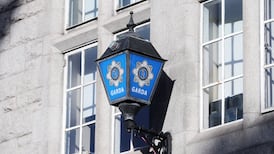THE Minister for Defence and the Marine, Mr Barrett, is seeking up to three additional ships for the Naval Service. Tenders are to be invited for one offshore and several in shore vessels, which may be funded by the EU to carry out fisheries protection.
Defence sources have confirmed that up to three ships may be purchased, subject to budgetary constraints. "Potential" tenders are being sought for one 60 to 85 metre ship and several 50 to 65 metre ships - the latter being inshore vessels with capability for "limited" offshore patrols.
Ireland has access to up to £76 million in EU capital funding for fishery protection. These waters are the second largest and most poorly protected EU sea area.
Details drawn up by the Department of Defence for the EU Journal specify that the 60 to 85 metre ship should have a beam of 10-15 metres, draft of three to 5.5 metres, maximum speed of 18 to 24 knots and accommodation for 20 to 40 "plus" crew. A new offshore vessel built to Naval Service requirements would cost about £25 to £30 million.
The 50 to 65 metre inshore vessels should have a beam of 10 to 13 metres, draft of three to four metres, displacement of 550 to 750 tonnes, maximum speed of 26 knots, and accommodation for up to and over 25 crew. Surveillance and armament fits for all ships will be addressed at the tender stage, the notice states. Closing date for proposals is January 10th, 1997.
Department officials in both Defence and Marine have been considering several options, including buying two British Hong Kong based Peacock class inshore vessels which will come on the market next year. The last two craft bought for the Naval Service - the Cliona and Orla - were bought on a similar basis and have proved highly successful. A Scottish shipyard is understood to have offered a package involving new and reconditioned vessels, while Norway, which offers state support to its shipbuilding industry, has also expressed keen interest.
Mr Barrett is expected to announce details of the move to Naval Service officers in Galway tomorrow, at the annual delegate conference of the Representative Association of Commissioned Officers (RACO). Overall Naval Service strength is expected to drop below 1,000 this week, to 995, at a time of increasing pressure to carry out drug interdiction and fishery protection duties. Current strength has been only 85 per cent of the authorised figure.
Britain, which has the EU's largest sea area, has a patrol fleet of over 300 vessels, while France and Spain have over 250 ships each. Belgium, which is responsible for a sea area of 1,700 miles, has 31 vessels, while Ireland, with an exclusive economic zone of 132,000 square miles, has seven.
The oldest Irish vessel, the LE Deirdre, which effected one of the two recent Japanese arrests, is due to come out of service in 2002.
Patrolling work in the Irish fisheries zone is said to have increased by 30 per cent since Spain and Portugal were given access to the Irish Box last January, yet only three of the seven craft can be deployed at sea at any one time due to crewing shortages and maintenance of ageing ships.
Low morale has been reflected in a significant rise in transfer requests to the Army - up to 85 staff are expected to leave the service this year - and there has been a significant drop in applicants for the latest recruiting round, which is expected to yield 20 places.
The Minister is also expected to refer to the current Price Waterhouse consultancy reviews of the Naval Service and Air Corps, which he commissioned last June. He is due to receive both reports by the end of this month.











